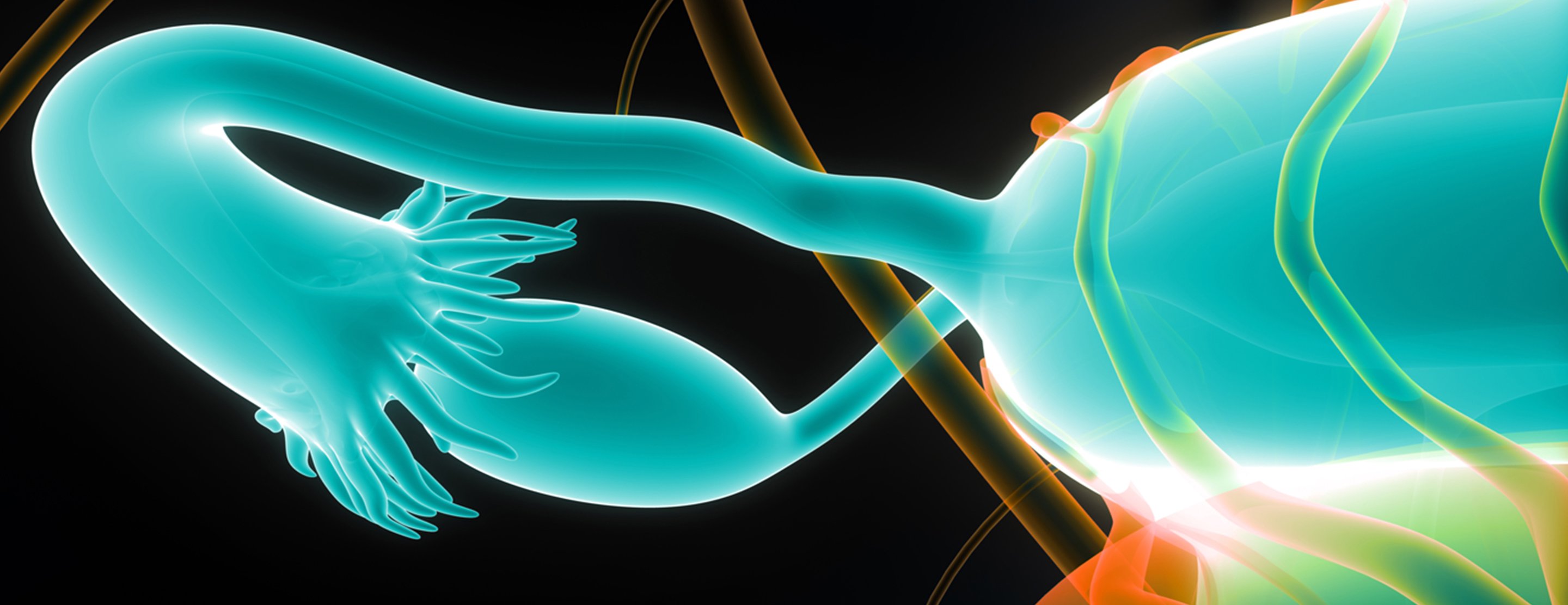
Taking Charge: What Is Ovarian Cancer?
Ovarian cancer is a malignant (cancerous) growth that begins in the ovaries. The ovaries produce eggs (ova) and are also the main source of the female hormones, estrogen and progesterone. Most ovarian cancers, however, develop from the tissue on the surface of the ovary, called the epithelium, not in the cells that make hormones and eggs.
Types of ovarian tumors
Many types of tumors can start growing in the ovaries. Some of these are benign (noncancerous) and can be cured by surgically removing them. Other types of ovarian tumors are malignant (cancerous) and may spread through the body. These cancerous tumors require more complex treatment.
Epithelial ovarian carcinoma (EOC)
The most common ovarian cancer, epithelial ovarian carcinoma (EOC), arises in the epithelial cells that cover the ovary. It accounts for 90 percent of ovarian cancers. Under the microscope, EOC can be divided into serous, mucinous, endometrioid and clear cell types. Some EOCs cannot be classified into one of these four groups. They are called undifferentiated EOCs and they tend to grow and spread more quickly.
In addition to their classification by cell type, EOCs are given a grade and a stage. The grade — on a scale of 1,2 or 3 — is determined by how the cells look under the microscope. Grade 1 EOC, which more closely resembles normal tissue, tends to have a better prognosis, or outlook. Grade 3 EOC, which less closely resembles normal tissues, usually has a worse outlook.
The tumor stage describes how far the tumor has spread from its starting point in the ovary.
There is also a special category of EOC called borderline, or grade 0, EOC. This type of EOC is treated with surgery, and does not respond to chemotherapy or radiation therapy.
Germ cell tumors
These tumors start from the cells that produce the eggs (ova). Dysgerminoma is the most common ovarian cancer of germ cells, but it accounts for only 2 percent of all ovarian cancers. It usually affects women in their teens and twenties.
When they are limited to the ovary, over 95 percent of dysgerminomas are cured by surgical removal of the ovary. If the tumor has spread, surgery and chemotherapy cure about 90 percent of patients.
A cancerous tumor called an immature teratoma can occur in girls and young women, usually younger than 18. It can usually be cured by surgical removal, if the growth is confined to the ovary. If it has spread, chemotherapy is recommended along with surgery.
Two other very rare types of germ cell tumors, endodermal sinus tumors (yolk sac tumor) and choriocarcinoma, also affect girls and young women. They tend to grow and spread rapidly, but usually respond very well to chemotherapy.
Stromal tumors
These uncommon tumors, which are sometimes cancerous, start from cells in the connective tissue that holds the ovary together and produces the female hormones. Stromal tumors often produce female, and sometimes male, hormones. They can cause vaginal bleeding to resume after menopause, or can cause menstrual periods and breast development in young girls. If male hormones are produced, the tumors can disrupt normal periods and cause facial and body hair to grow.
Cancerous stromal tumors include granulosa cell tumors, granulosa-theca tumors, and Sertoli-Leydig cell tumors. These tumors tend to be low-grade cancers.
Read More:
- Next section of Taking Charge: Who Gets Ovarian Cancer?
Return to the Taking Charge Index
- What Is Breast Cancer?
- Breast Cancer Risk Factors
- If You Are at High Risk for Breast Cancer
- Screening for Breast Cancer
- How Is Breast Cancer Diagnosed?
- How Is Breast Cancer Treated?
- What Is Ovarian Cancer?
- Who Gets Ovarian Cancer?
- If You Are at High Risk for Ovarian Cancer
- Screening for Ovarian Cancer
- How Is Ovarian Cancer Diagnosed?
- How is Ovarian Cancer Treated?
- Living with Ovarian Cancer
- Diet, Lifestyle and Cancer
- Glossary of Terms
UCSF Health medical specialists have reviewed this information. It is for educational purposes only and is not intended to replace the advice of your doctor or other health care provider. We encourage you to discuss any questions or concerns you may have with your provider.

















